Automatic Diesel 4WD L300 Delicas* have a dual fuel tank. Not a lot is known about how these work, the English language workshop manuals ignore them entirely, and the parts books are typically vague. Well, I've just refurbished mine and I figured out how it all works- and I took pictures. Here we go:
*and some others, but I'm not entirely sure which.
——Filling and fill vents——
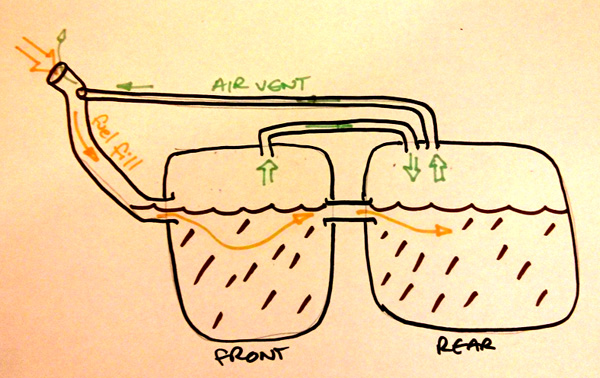
Filling is straightforward- a large 41mm ID pipe* goes from the filler neck to the front tank, another 41mm pipe connects the front tank to the rear tank.
The air in the tanks needs to vent while filling. The tanks vent through 15mm ID pipes coming out of the tops of the tanks. The front tank vents into the rear tank, and then the rear tank vent goes to the vent port visible just inside the filler neck. It's done this way to give diesel time to drop out of venting air: the incoming fuel is foamy, if you vent the front tank directly to the fuel filler neck you get air and fuel spitting out.
——Fuel Supply to engine——
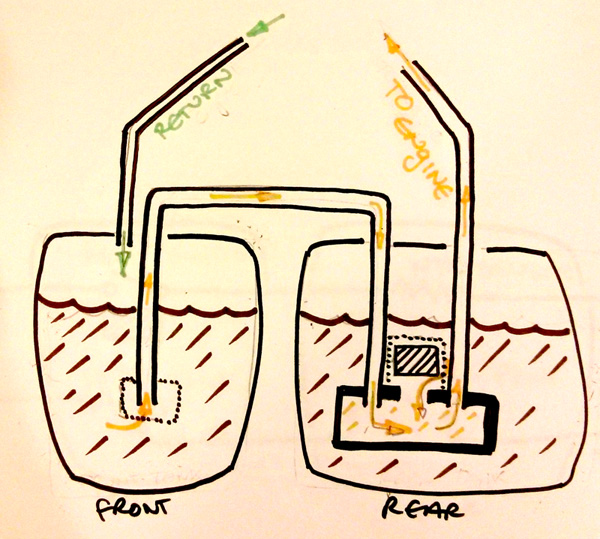
Here’s where it gets tricky. The fuel supply to the engine is primarily drawn from the rear tank, but it’s a bit more complicated than that. The rear tank’s pickup draws fuel through the strainer and into the pickup chamber.
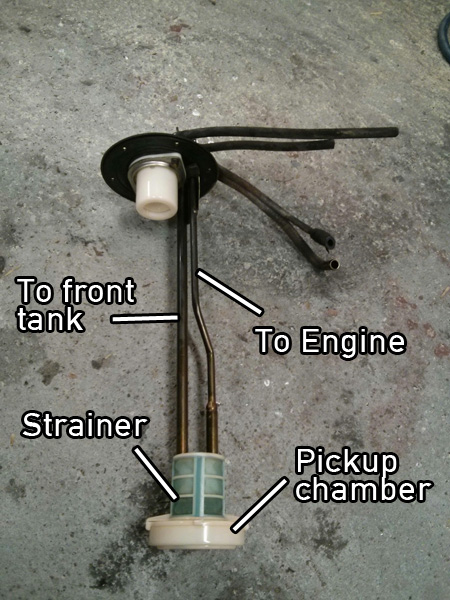
The pickup chamber is also connected to the front tank- so the fuel is also drawn from the front tank. Normally the pipe connecting the front tank to the rear tank would be full of fuel and acting as a syphon, keeping the tank levels equal.
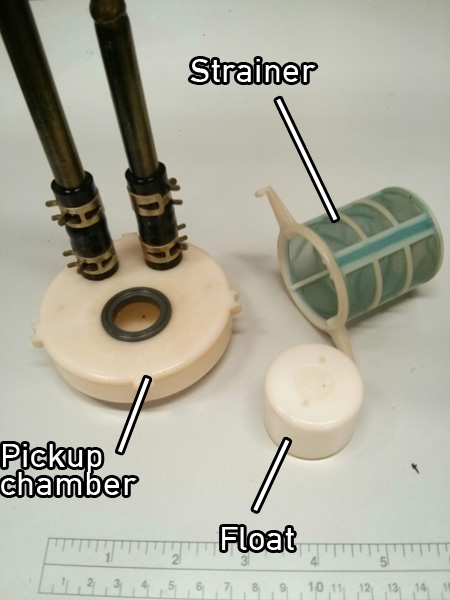
If the syphon loses its prime the fuel level in the rear tank can get too low, and the float inside the strainer blocks the inlet into the pickup chamber. Fuel is now only drawn from the front tank.
Excess fuel from the engine is returned to the front tank.
——Emissions vents——
Emissions vapour/ fuel expansion is vented through the small tubes. The front tank’s vapour vent is connected to the rear tank, and the rear tank’s vent goes to the purge valve on the chassis. (On a gasoline car I imagine this vent line would go to the evaporative control canister).
——Fuel gauge and low fuel light——
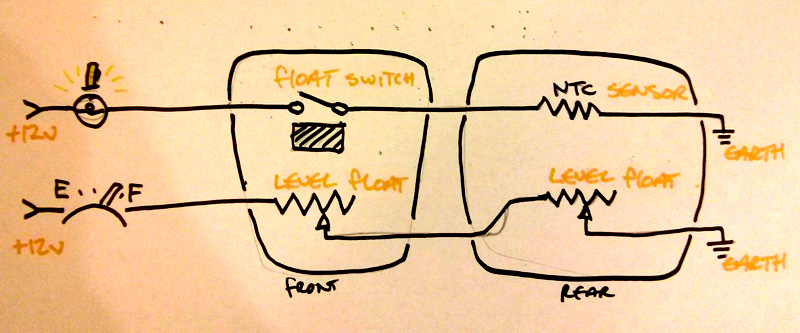
There are two fuel level senders, connected in series so the fuel gauge shows the sum of their levels.
The low fuel warning light sensors are likewise connected in series, but work in different ways. The front tank’s sensor is a float switch which turns on when fuel level gets too low.
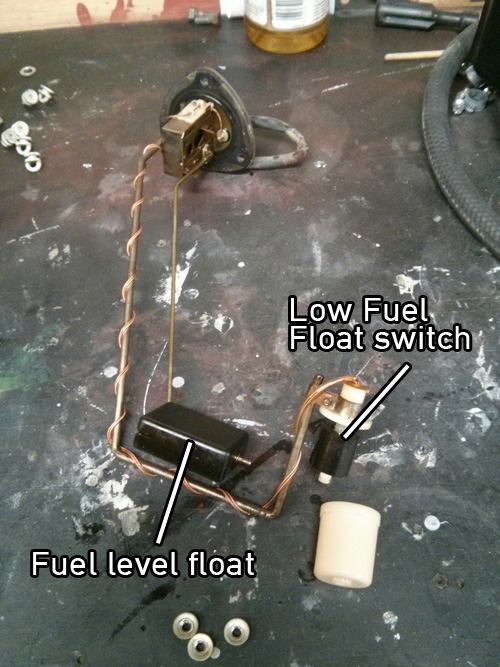
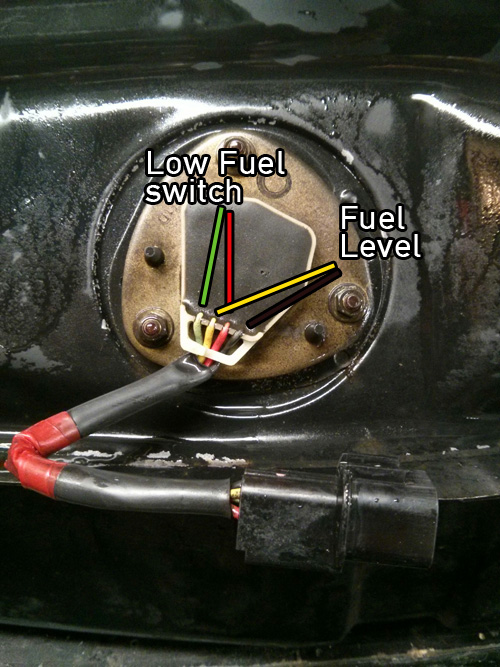
The rear tank’s sensor is a NTC Thermistor- a small component that has high resistance when cool (like when immersed in fuel), but rapidly heats up when not immersed, flowing more and more current until there’s enough to make the light in the dashboard glow.
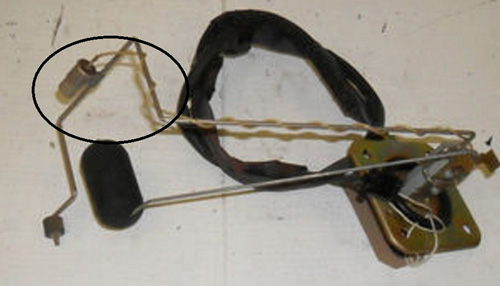
Not actually a Delica level sender- but pretty close. The NTC Thermistor is inside the metal can (circled).
For the light to be on, both the front tank switch and the rear tank sensor need to be on.
Here's what all those pipes and stuff look like on the tanks- they're pretty much impossible to see while the tanks are in place, and they're going to be covered in dirt and rocks. Gross.
Front tank pipes:
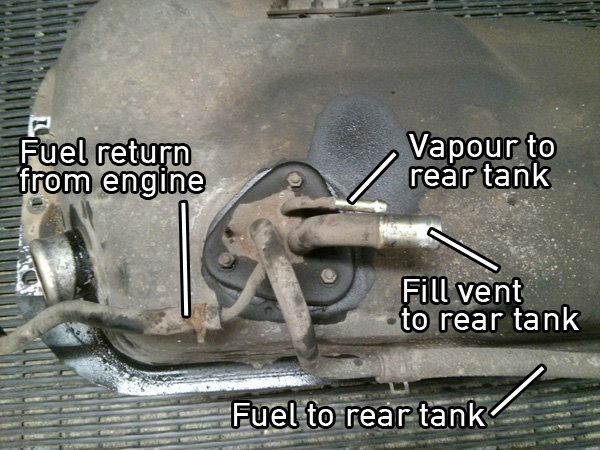
Rear tank pipes:
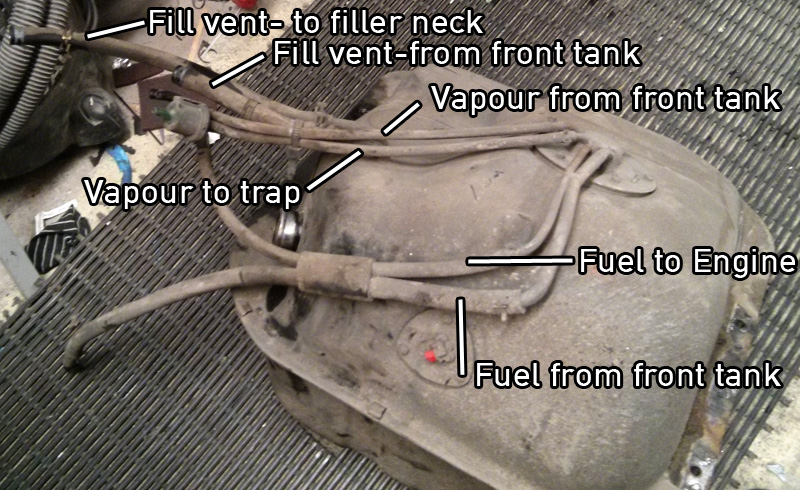
Finally, I really don't recommend removing your fuel tanks unless you have to. Dirt and rocks fall on your head constantly, diesel will spill out of everywhere, and half the bolts will be rusted solid. Not fun.
*Edit, I previously said the pipes were 50mm but that's OD, which is a pointless measurement.
*and some others, but I'm not entirely sure which.
——Filling and fill vents——
Filling is straightforward- a large 41mm ID pipe* goes from the filler neck to the front tank, another 41mm pipe connects the front tank to the rear tank.
The air in the tanks needs to vent while filling. The tanks vent through 15mm ID pipes coming out of the tops of the tanks. The front tank vents into the rear tank, and then the rear tank vent goes to the vent port visible just inside the filler neck. It's done this way to give diesel time to drop out of venting air: the incoming fuel is foamy, if you vent the front tank directly to the fuel filler neck you get air and fuel spitting out.
——Fuel Supply to engine——
Here’s where it gets tricky. The fuel supply to the engine is primarily drawn from the rear tank, but it’s a bit more complicated than that. The rear tank’s pickup draws fuel through the strainer and into the pickup chamber.
The pickup chamber is also connected to the front tank- so the fuel is also drawn from the front tank. Normally the pipe connecting the front tank to the rear tank would be full of fuel and acting as a syphon, keeping the tank levels equal.
If the syphon loses its prime the fuel level in the rear tank can get too low, and the float inside the strainer blocks the inlet into the pickup chamber. Fuel is now only drawn from the front tank.
Excess fuel from the engine is returned to the front tank.
——Emissions vents——
Emissions vapour/ fuel expansion is vented through the small tubes. The front tank’s vapour vent is connected to the rear tank, and the rear tank’s vent goes to the purge valve on the chassis. (On a gasoline car I imagine this vent line would go to the evaporative control canister).
——Fuel gauge and low fuel light——
There are two fuel level senders, connected in series so the fuel gauge shows the sum of their levels.
The low fuel warning light sensors are likewise connected in series, but work in different ways. The front tank’s sensor is a float switch which turns on when fuel level gets too low.
The rear tank’s sensor is a NTC Thermistor- a small component that has high resistance when cool (like when immersed in fuel), but rapidly heats up when not immersed, flowing more and more current until there’s enough to make the light in the dashboard glow.
Not actually a Delica level sender- but pretty close. The NTC Thermistor is inside the metal can (circled).
For the light to be on, both the front tank switch and the rear tank sensor need to be on.
Here's what all those pipes and stuff look like on the tanks- they're pretty much impossible to see while the tanks are in place, and they're going to be covered in dirt and rocks. Gross.
Front tank pipes:
Rear tank pipes:
Finally, I really don't recommend removing your fuel tanks unless you have to. Dirt and rocks fall on your head constantly, diesel will spill out of everywhere, and half the bolts will be rusted solid. Not fun.
*Edit, I previously said the pipes were 50mm but that's OD, which is a pointless measurement.
Last edited:

